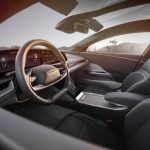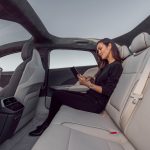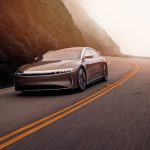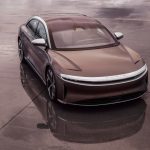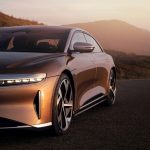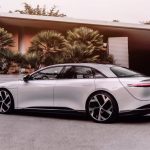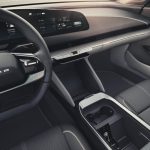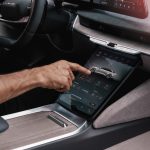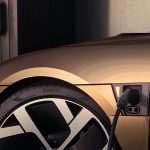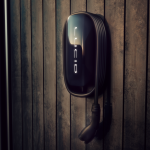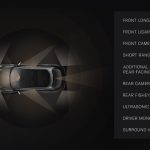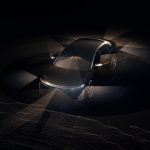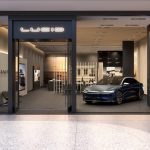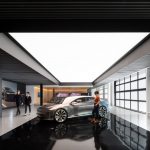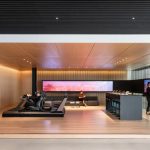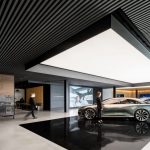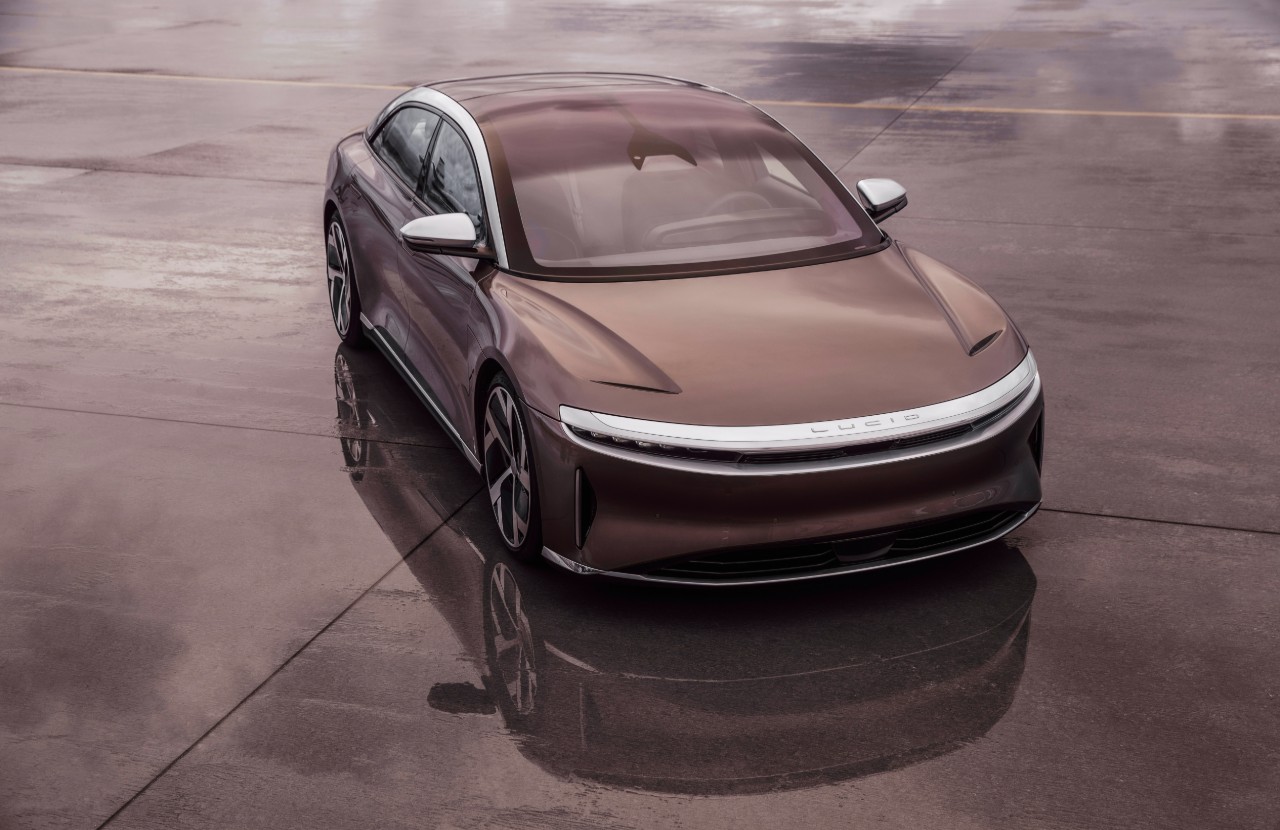
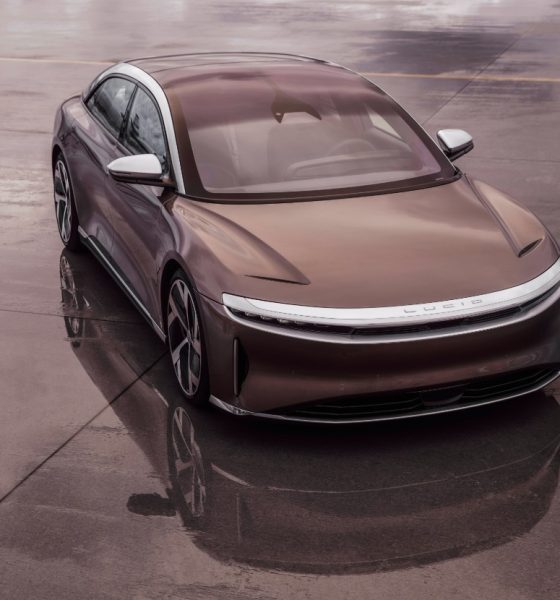
News
Lucid Air unveiling: four variants, <$80k starting price, 1,080 HP, 517-mile range rating
Lucid has officially unveiled the Air, the company’s first production car, which aims to break the bounds of EV technology everywhere. The company’s September 9th unveiling event revealed the four variants of the Air, along with its tech developments that the company is using to compete directly with the growing electric vehicle market.
Deliveries of the first Air models will begin in Spring 2021, but the car has already set several new and unheard-of records for the EV sector. Not only is the Air currently holding the benchmark for EPA-estimated range at 517 miles, but its “Dream Edition” variant also set a 9.9-second quarter-mile record, becoming just the third production ar on Earth to ever accomplish that feat.
Lucid’s primary focus is similar to Tesla’s: Create a high-performance and efficient electric cars that help accelerate the world’s transition to sustainable transportation.
“Lucid Motors is driven to make the electric car better, and by doing so, help move the entire industry forward, towards accelerated adoption of sustainable mobility,” CEO and CTO Peter Rawlinson said. “The goal of this relentless approach to developing the world’s most advanced electric vehicle is to benefit all mankind with sustainable, zero-emission transportation, and to also attract new customers to the world of EVs.”
The company’s ideal entrance into the market was to create a car that would push the limits and be competitive with the leaders of the EV sector. The Air is the near-perfect car to do that with.
“With the Lucid Air, we have created a halo car for the entire industry, one which shows the advancements that are possible by pushing the boundaries of EV technology and performance to new levels,” Rawlinson added.
Lucid Space Concept
Lucid Air captures a revolutionary approach to automotive packaging, known as the Lucid Space Concept. The idea capitalizes on the compact design of Lucid’s in-house powertrain, which optimizes interior cabin and storage space. The company focused on a clean-cut, holistic approach that was never-before-seen from other companies who develop electric vehicles.
Lucid’s focus was to make smaller, yet more powerful electric motors that not only increase the performance of the vehicle but also give passengers a more comfortable experience. “This extends the philosophy of hyper-efficiency embedded in every facet of Lucid Air, from energy to spatial efficiency, delivering an unprecedented combination of range, practicality, performance, and luxury,” the company said.
- Credit: Lucid Motors
- Credit: Lucid Motors
The design also is drastically different from any other car on the road. While the differences are subtle, the modern proportions for the Air deliver a one-of-a-kind look that gives drivers a unique design.
“When we embarked on this journey at Lucid Motors and the development of our first vehicle, the Lucid Air, we refused to compromise. We decided early on that we were going to pursue every facet of performance, innovation, and luxury,” Vice President of Design, Derek Jenkins, said.
- Credit: Lucid Motors
- Credit: Lucid Motors
- Credit: Lucid Motors
- Credit: Lucid Motors
Advanced Glass Cockpit Displays with Tactile Physical Controls
The interior of the Lucid Air “reflects a revolution in how next-generation free form displays are elegantly integrated into the design architecture in the cabin,” the company states. The Air’s 34-inch curved glass 5K display sits lightly above the dashboard, contributing to an airy and light feel of the interior.
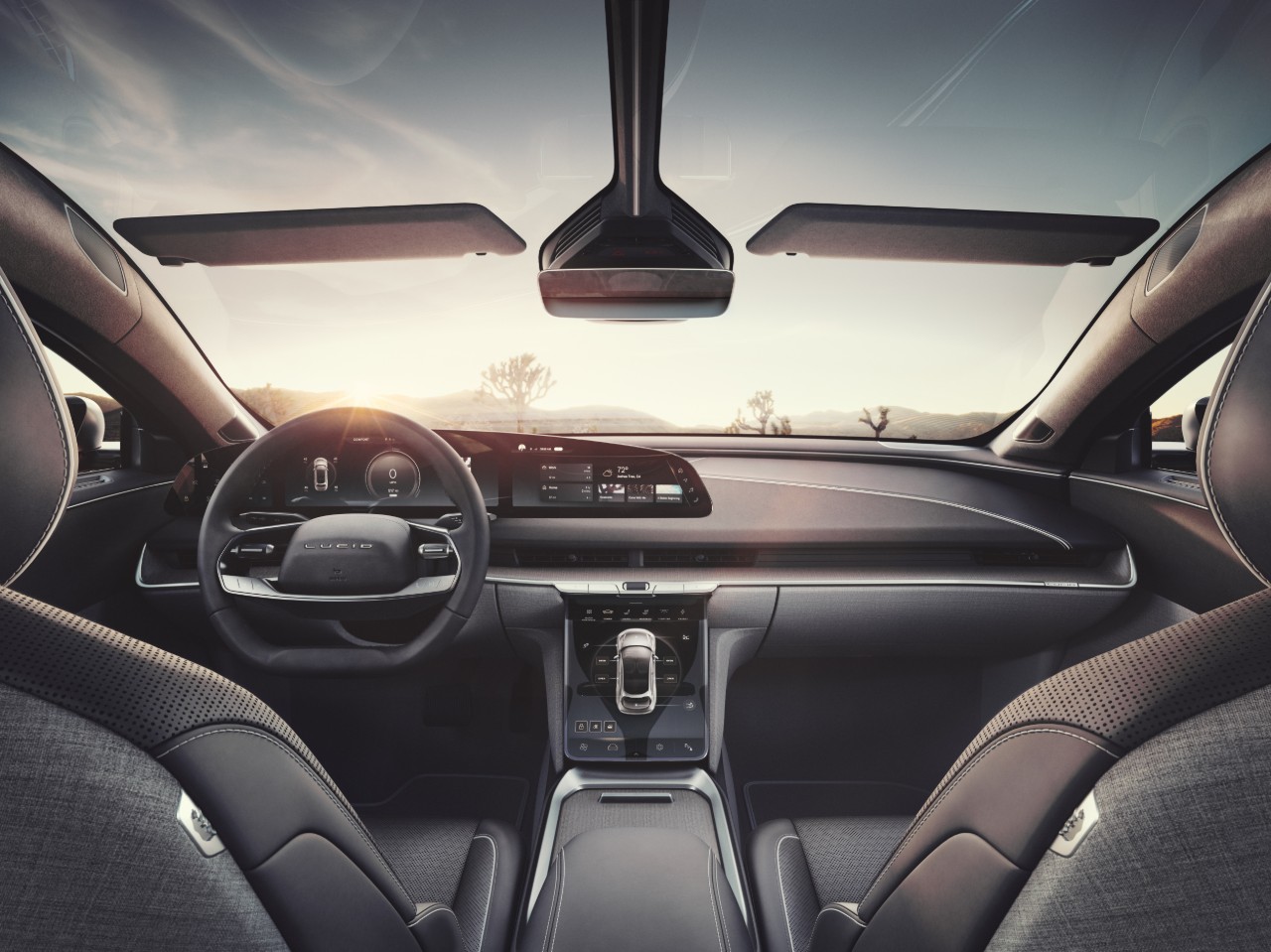
A retractable central Pilot Panel also sits in a convenient location for drivers, putting ultimate control into their fingertips. Digital displays are complemented by high tactile, precision-milled physical controls that are present for operators to take full control of their vehicle with ease of access.
- Credit: Lucid Motors
- Credit: Lucid Motors
Record-Breaking Performance
The Air’s Dream Edition variant, a Dual-Motor, All-Wheel-Drive architecture achieved the quarter-mile in just 9.9 seconds thanks to a 1,080 horsepower powertrain. It reached these times on a consistent and repeatable basis, and to date, it is the only electric sedan to achieve the sub-10 second quarter-mile time.
Additionally, the 113 kWh battery pack complements its high-performance specifications with 517-miles of all-electric range on a single charge.
World’s Fastest Charging Electric Vehicle
The Lucid Air will be the fastest charging EV in the world when it arrives on the market in the Spring. The company states that it will have the capability to charge at rates of up to 20 miles per minute when connected to a DC Fast Charging network. Owners will translate just 20 minutes of charging into 300 miles of range.
Additionally, Lucid plans to introduce a Vehicle-to-Grid and Vehicle-to-Vehicle charging infrastructures that will give owners bi-directional capabilities that are built into the Air.
“Home charging is one of the key benefits of EV ownership. In addition to the standard Lucid Mobile Charging Cord that comes with every Lucid vehicle, Lucid has also developed the Lucid Connected Home Charging Station, one of the first AC charging stations with bi-directional charging ever offered. With bi-directional charging, owners can enjoy not just a more cost-effective charging method, but also use their Lucid Air as a temporary energy reserve to power their homes, including off-grid vacation properties,” the company noted.
- (Credit: Lucid Motors)
- (Credit: Lucid Motors)
Next Level Advanced Driver Assistance Systems (ADAS)
Lucid’s DreamDrive is a first-of-its-kind platform that combines the most comprehensive sensor suite on the market with a cutting-edge Driver Monitoring System. It is standard on the Lucid Air Dream Edition and is the first system to ever combine 32 sensors with covering vision, radar and ultrasonics, and high-resolution LIDAR. The combination of these systems provides “the safest possible approach to Level 2 and Level 3 driver assistance technologies,” the company stated.
- Credit: Lucid Motors
- Credit: Lucid Motors
Variants and Availability
The Lucid Air will be available in the North American market initially with four model ranges.
- The Air, starting below $80,000 and available in 2022. ($72,500 after federal tax credits)
- The Air Touring, starting at $95,000, available late 2021. ($87,500 after federal tax credits)
- The Air Grand Touring, starting at $139,000, available mid-2021. ($131,500 after federal tax credits)
- The Air Dream Edition, starting at $169,000, available Spring 2021. ($161,500 after federal tax credits)

Reservations are now open for customers in the U.S. and Canada, as well as in select countries in Europe and the Middle East. The reservation requires a $1,000 refundable deposit, or $7,500 refundable deposits for the Dream Edition. Prices and delivery dates will be available for international markets at a later date.
The Air will be available through 20 Lucid Studios and Service Centers that will open across North America by the end of 2021.
- Credit: Lucid Motors
- Credit: Lucid Motors
- Credit: Lucid Motors
- Credit: Lucid Motors
Dream Edition
“The Lucid Air Dream Edition will feature a unique combination of Lucid attributes and technology, combining incredible performance with exceptional range. The 1,080 horsepower luxury EV sedan will be available in Stellar White, Infinite Black, or a Dream Edition-exclusive, Eureka Gold finish. Each color will come with an exclusive “Santa Monica” themed interior trim, including full Nappa grain, Bridge of Weir leather throughout with silvered Eucalyptus wood. The Dream Edition will also feature a unique 21-inch “AeroDream” wheel design and be highlighted by special badging and trim that marks its position as a limited-production halo edition of the Lucid Air.”
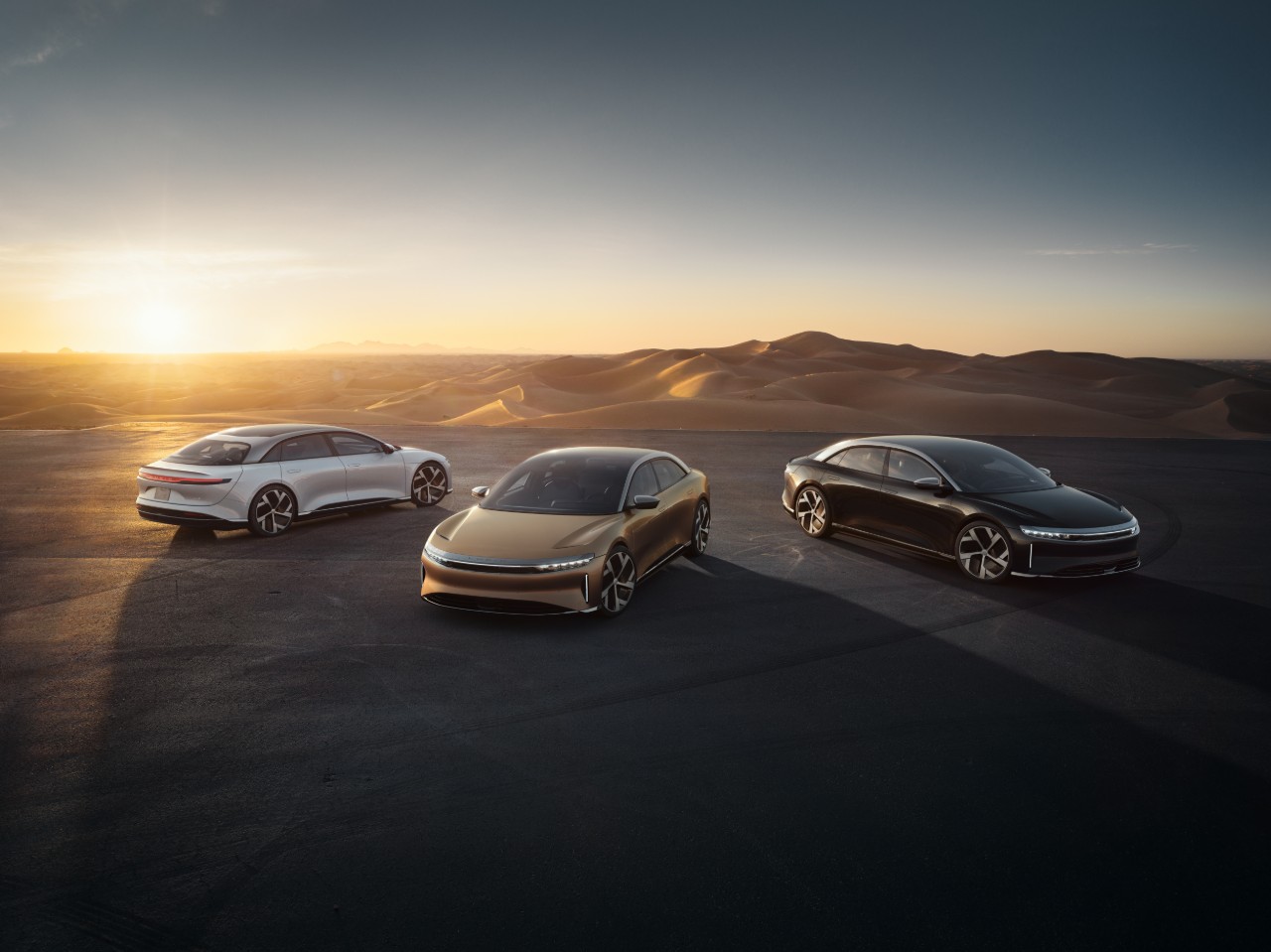

News
Tesla FSD fleet is nearing 7 billion total miles, including 2.5 billion city miles
As can be seen on Tesla’s official FSD webpage, vehicles equipped with the system have now navigated over 6.99 billion miles.

Tesla’s Full Self-Driving (Supervised) fleet is closing in on almost 7 billion total miles driven, as per data posted by the company on its official FSD webpage.
These figures hint at the massive scale of data fueling Tesla’s rapid FSD improvements, which have been quite notable as of late.
FSD mileage milestones
As can be seen on Tesla’s official FSD webpage, vehicles equipped with the system have now navigated over 6.99 billion miles. Tesla owner and avid FSD tester Whole Mars Catalog also shared a screenshot indicating that from the nearly 7 billion miles traveled by the FSD fleet, more than 2.5 billion miles were driven inside cities.
City miles are particularly valuable for complex urban scenarios like unprotected turns, pedestrian interactions, and traffic lights. This is also the difference-maker for FSD, as only complex solutions, such as Waymo’s self-driving taxis, operate similarly on inner-city streets. And even then, incidents such as the San Francisco blackouts have proven challenging for sensor-rich vehicles like Waymos.
Tesla’s data edge
Tesla has a number of advantages in the autonomous vehicle sector, one of which is the size of its fleet and the number of vehicles training FSD on real-world roads. Tesla’s nearly 7 billion FSD miles then allow the company to roll out updates that make its vehicles behave like they are being driven by experienced drivers, even if they are operating on their own.
So notable are Tesla’s improvements to FSD that NVIDIA Director of Robotics Jim Fan, after experiencing FSD v14, noted that the system is the first AI that passes what he described as a “Physical Turing Test.”
“Despite knowing exactly how robot learning works, I still find it magical watching the steering wheel turn by itself. First it feels surreal, next it becomes routine. Then, like the smartphone, taking it away actively hurts. This is how humanity gets rewired and glued to god-like technologies,” Fan wrote in a post on X.
News
Tesla starts showing how FSD will change lives in Europe
Local officials tested the system on narrow country roads and were impressed by FSD’s smooth, human-like driving, with some calling the service a game-changer for everyday life in areas that are far from urban centers.

Tesla has launched Europe’s first public shuttle service using Full Self-Driving (Supervised) in the rural Eifelkreis Bitburg-Prüm region of Germany, demonstrating how the technology can restore independence and mobility for people who struggle with limited transport options.
Local officials tested the system on narrow country roads and were impressed by FSD’s smooth, human-like driving, with some calling the service a game-changer for everyday life in areas that are far from urban centers.
Officials see real impact on rural residents
Arzfeld Mayor Johannes Kuhl and District Administrator Andreas Kruppert personally tested the Tesla shuttle service. This allowed them to see just how well FSD navigated winding lanes and rural roads confidently. Kruppert said, “Autonomous driving sounds like science fiction to many, but we simply see here that it works totally well in rural regions too.” Kuhl, for his part, also noted that FSD “feels like a very experienced driver.”
The pilot complements the area’s “Citizen Bus” program, which provides on-demand rides for elderly residents who can no longer drive themselves. Tesla Europe shared a video of a demonstration of the service, highlighting how FSD gives people their freedom back, even in places where public transport is not as prevalent.
What the Ministry for Economic Affairs and Transport says
Rhineland-Palatinate’s Minister Daniela Schmitt supported the project, praising the collaboration that made this “first of its kind in Europe” possible. As per the ministry, the rural rollout for the service shows FSD’s potential beyond major cities, and it delivers tangible benefits like grocery runs, doctor visits, and social connections for isolated residents.
“Reliable and flexible mobility is especially vital in rural areas. With the launch of a shuttle service using self-driving vehicles (FSD supervised) by Tesla in the Eifelkreis Bitburg-Prüm, an innovative pilot project is now getting underway that complements local community bus services. It is the first project of its kind in Europe.
“The result is a real gain for rural mobility: greater accessibility, more flexibility and tangible benefits for everyday life. A strong signal for innovation, cooperation and future-oriented mobility beyond urban centers,” the ministry wrote in a LinkedIn post.
News
Tesla China quietly posts Robotaxi-related job listing
Tesla China is currently seeking a Low Voltage Electrical Engineer to work on circuit board design for the company’s autonomous vehicles.

Tesla has posted a new job listing in Shanghai explicitly tied to its Robotaxi program, fueling speculation that the company is preparing to launch its dedicated autonomous ride-hailing service in China.
As noted in the listing, Tesla China is currently seeking a Low Voltage Electrical Engineer to work on circuit board design for the company’s autonomous vehicles.
Robotaxi-specific role
The listing, which was shared on social media platform X by industry watcher @tslaming, suggested that Tesla China is looking to fill the role urgently. The job listing itself specifically mentions that the person hired for the role will be working on the Low Voltage Hardware team, which would design the circuit boards that would serve as the nervous system of the Robotaxi.
Key tasks for the role, as indicated in the job listing, include collaboration with PCB layout, firmware, mechanical, program management, and validation teams, among other responsibilities. The role is based in Shanghai.
China Robotaxi launch
China represents a massive potential market for robotaxis, with its dense urban centers and supportive policies in select cities. Tesla has limited permission to roll out FSD in the country, though despite this, its vehicles have been hailed as among the best in the market when it comes to autonomous features. So far, at least, it appears that China supports Tesla’s FSD and Robotaxi rollout.
This was hinted at in November, when Tesla brought the Cybercab to the 8th China International Import Expo (CIIE) in Shanghai, marking the first time that the autonomous two-seater was brought to the Asia-Pacific region. The vehicle, despite not having a release date in China, received a significant amount of interest among the event’s attendees.
